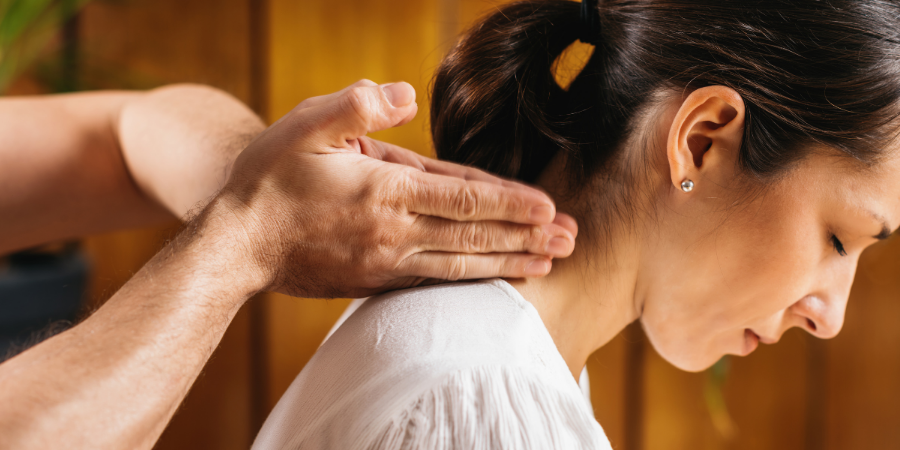Pain is an unavoidable part of life. Whether it's a headache, muscle soreness, or chronic pain, finding relief is a top priority for many. With so many options available, it can be overwhelming to navigate the world of pain relief. In this comprehensive guide, we will explore the basics of pain relief and provide you with the knowledge you need to make informed decisions about managing your discomfort. From over-the-counter remedies to alternative therapies, we've got you covered. So sit back, relax, and get ready to discover the secrets of pain relief!
Over-the-Counter Medications: Your First Line of Defense
When it comes to quick relief, over-the-counter medications are often the go-to option for many people. These readily available drugs can effectively alleviate a wide range of common pains. Here are some of the most commonly used over-the-counter medications:
- Acetaminophen: This pain reliever is commonly used for headaches, muscle aches, and fever. It is gentle on the stomach and generally considered safe when used as directed.
- Nonsteroidal Anti-Inflammatory Drugs (NSAIDs): NSAIDs, such as ibuprofen and naproxen sodium, are effective for reducing inflammation and relieving pain. They are commonly used for conditions like arthritis, menstrual cramps, and minor injuries.
- Topical Analgesics: These creams, gels, or patches are applied directly to the skin to provide localized pain relief. They can be helpful for muscle and joint pain, as well as certain types of neuropathy.
Remember to always read and follow the instructions on the packaging, and consult with a healthcare professional if you have any concerns or questions about over-the-counter medications.
Natural Remedies: Harnessing the Power of Nature
If you prefer a more holistic approach to pain relief, natural remedies can be a great option. While they may not have the same immediate effect as over-the-counter medications, they can provide long-term relief without the potential side effects. Here are some natural remedies to consider:
- Herbal Supplements: Many herbs have anti-inflammatory and analgesic properties that can help reduce pain. Popular herbal supplements include turmeric, ginger, and boswellia.
- Essential Oils: Aromatherapy using essential oils can provide relief for headaches, muscle pain, and stress. Lavender, peppermint, and eucalyptus are commonly used for pain relief.
- Heat and Cold Therapy: Applying heat or cold to the affected area can help reduce inflammation and alleviate pain. Heat therapy is best for muscle aches, while cold therapy is effective for reducing swelling and numbing pain.
It's important to note that natural remedies may not be suitable for everyone, and it's always a good idea to consult with a healthcare professional before trying any new treatment.
Physical Therapy: Strengthening Your Body, Easing Your Pain
Physical therapy is a non-invasive treatment option that focuses on restoring your body's function and alleviating pain through exercises and manual techniques. It can be highly effective for a wide range of conditions, including:
- Musculoskeletal Pain: Physical therapy can help alleviate pain caused by injuries, sprains, strains, and overuse.
- Chronic Pain: For individuals with chronic pain conditions like fibromyalgia or arthritis, physical therapy can provide long-term relief and improve quality of life.
- Post-Surgery Rehabilitation: Physical therapy plays a vital role in recovering from surgeries, helping restore strength, flexibility, and mobility.
A qualified physical therapist will assess your condition and develop a personalized treatment plan to address your specific needs. They may incorporate exercises, stretches, manual therapy, and other techniques to help you regain control over your pain.
Mind-Body Therapies: Finding Harmony Within
The mind-body connection is a powerful tool for pain management. Mind-body therapies focus on using the mind's influence to alleviate physical pain. Here are some popular mind-body therapies:
- Meditation: This practice involves focusing your attention and eliminating the stream of thoughts that may be contributing to your pain. Meditation can help reduce stress, promote relaxation, and improve pain tolerance.
- Yoga: Combining physical postures, breathing exercises, and meditation, yoga can help improve strength, flexibility, and balance while reducing pain and promoting overall well-being.
- Biofeedback: This technique involves using electronic devices to monitor and provide feedback on physiological processes like heart rate, blood pressure, and muscle tension. By learning to control these processes, individuals can reduce pain and improve their overall well-being.
Mind-body therapies can be used in conjunction with other pain relief methods to enhance their effectiveness. Incorporating these practices into your daily routine can help you better manage and cope with pain.
Alternative Therapies: Thinking Outside the Box
Sometimes, traditional pain relief methods aren't enough. That's where alternative therapies come in. While the scientific evidence behind these therapies may vary, many individuals find relief through these unconventional approaches. Here are a few alternative therapies to consider:
- Acupuncture: This ancient Chinese practice involves inserting thin needles into specific points on the body to restore balance and promote healing. Acupuncture is commonly used for chronic pain conditions like back pain and migraines.
- Chiropractic Care: Chiropractors use spinal adjustments and manipulations to relieve pain and improve overall function. This approach is particularly effective for conditions like lower back pain and neck pain.
- Massage Therapy: Massages can help relax muscles, relieve tension, and improve circulation. They are often used to alleviate muscle pain, headaches, and stress-related pain.
It's important to approach alternative therapies with an open mind, and to consult with qualified professionals who have experience in these areas.
Conclusion: Empowering Yourself Through Pain Relief
Pain relief is a personal journey, and there is no one-size-fits-all solution. By understanding the basics of pain relief and exploring various options, you can empower yourself to make informed decisions about managing your pain. Whether you opt for over-the-counter medications, natural remedies, physical therapy, mind-body therapies, or alternative treatments, remember that pain relief is within your reach. Consult with healthcare professionals, listen to your body, and don't be afraid to try different approaches until you find what works best for you. With the right tools and knowledge, you can reclaim control over your pain and live a more comfortable and fulfilling life.
.png)


 Canadian Dollar
Canadian Dollar  US Dollar
US Dollar 































.png)
